
Budapest is famous for its rich culture, underground caves, staggering architecture, and for being the Spa Capital of the World. The Queen of the Danube is also known for its unique Ruin Bars, gigantic Parliament Building, imposing Great Synagogue, and delectable local cuisine.
In this article, you’ll discover 33 cool things Budapest is famous for.
From heart-stopping river panoramas to peculiar underground adventures, and from mouthwatering dishes to vivid nightlife, we’re sure you’ll find an answer to the question, “What is Budapest known for?”
Let’s jump right in!
Start Planning Your Trip to Budapest with Our BEST Recommendations:
⭐ Top Tours in Budapest ⭐
📍 Budapest Grand Tour – the highlights of Buda and Pest, including the Parliament.
📍 Danube Cruise with Prosecco – unlimited prosecco and Budapest at night.
⭐ Best Accommodations in Budapest ⭐
🏨 Monastery Boutique Hotel Budapest – our top pick near Buda’s main attractions.
🏨 Bohem Art Hotel – this funky, hip hotel has the vibe of an art gallery.
⭐ Easiest Transportation Options in Budapest ⭐
🚍 Budapest Card – enjoy discounts, free travel, and entrances to museums.
🚍 Discover Cars – compare and find the best rates for car rentals.
✅ Note: This article contains affiliate links. In case you purchase something through one of these links, we may receive a small commission at no extra cost to you. Thank you for helping us keep creating the free content on this website!
The Landmarks Budapest Is Famous For
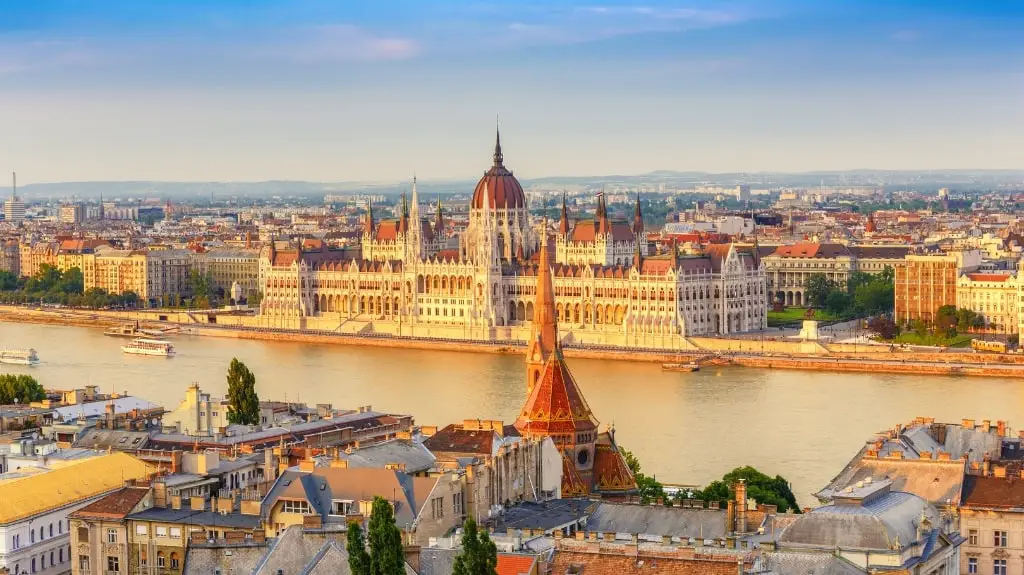
The Hungarian capital offers plenty of captivating buildings and attractions to the millions who visit it each year. In this section, you’ll find the landmarks Budapest is known for.
- The Hungarian Parliament Building. The jaw-dropping House of Parliament is the main reason why Budapest is famous among tourists. The building is the world’s third-largest national assembly. It is also the biggest structure in Hungary, covering approximately 194,000 sq. ft. (18,000 sq. m). The Parliament combines three architectural styles – neo-Gothic, Baroque, and Renaissance. The resulting fusion further amplifies its magnificence.
- Heroes’ Square (Hosök Tere). Located at the end of Andrássy Avenue, Heroes’ Square offers a lot to see: from the Millennium Monument depicting the Seven Chieftains of the Magyars to the statue of Archangel Gabriel holding the Hungarian crown. You’ll find the Museum of Fine Arts and the Palace of Art (Műcsarnok) situated on two of the square’s sides.
- Hungarian State Opera House. Commissioned by Emperor Franz Joseph, the Hungarian Opera House opened its doors in 1884. The incredible auditorium has 1,200 seats. Its excellent acoustics create the magic of the State Opera House. If you don’t have the chance to attend an opera performance, the frequent guided tours would give you an idea of how amazing the building is.
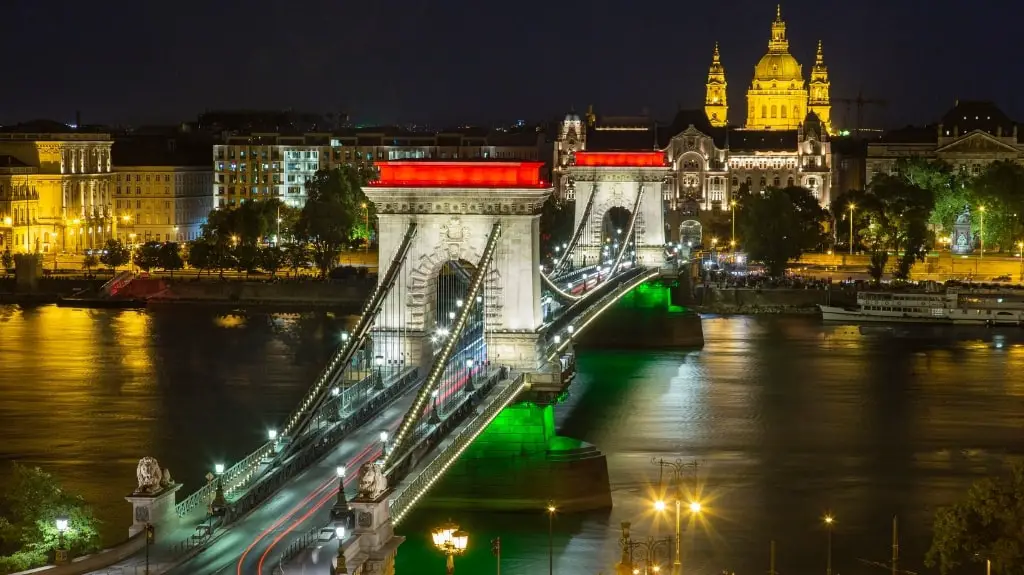
- The Chain Bridge. The most famous bridge of Budapest is a top tourist attraction. The 1849 suspension structure connects Buda and Pest – the west and east side of the city. It’ll take you about 10 minutes to walk across the intricate bridge, and you’ll be rewarded with stunning views of the Danube River.
- Dohány Street Synagogue. Also known as the Great Synagogue, this is the world’s biggest synagogue outside of Israel. It was finished in 1859 and completely renovated in the 1990s. The majestic building is in the Moorish Revival style and was inspired by the world-famous Alhambra Palace in Spain.
- Hungarian National Museum. Numerous pieces related to art, archaeology, war, crafts, and religion are part of the dozens of exceptional collections displayed in the museum. The Neoclassical building is a fine example of Budapest’s cultural heritage, while its enchanting garden is a popular meeting spot for locals.
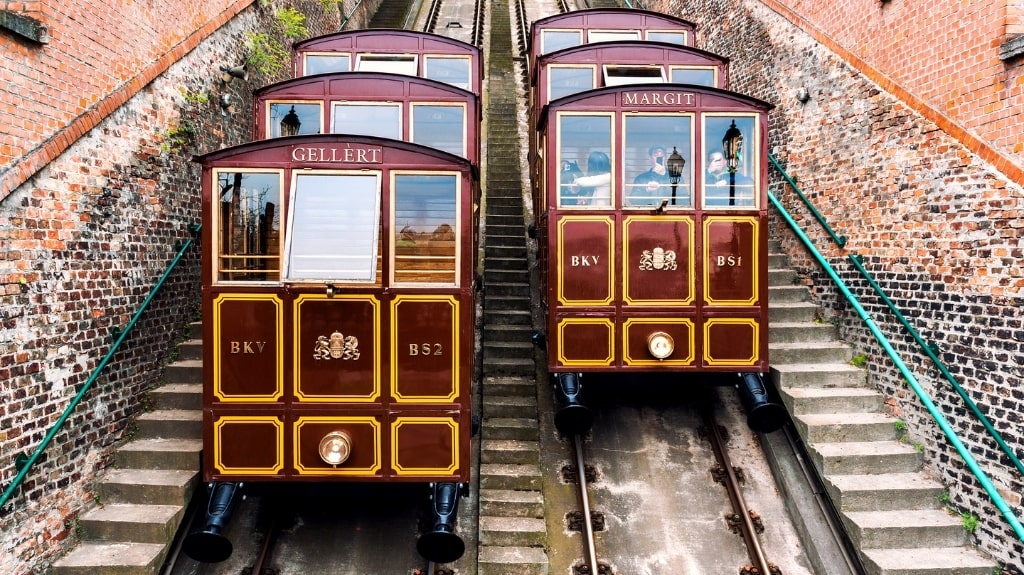
- The Buda Castle Hill Funicular. The chain railway is the second-oldest in the world and has been operational since 1870. It is the fastest and most attractive way to visit Castle Hill, with glorious panoramic views of the Danube. One of the most curious facts about Budapest is that authorities slowed down the funicular in 1988, so passengers would have more time to enjoy the scenery.
- Buda Castle. On Castle Hill, you’ll find the magnificent Buda Castle, the former palace of the Hungarian kings. The former Royal residence is one of the most distinguishable buildings in Budapest. Originally built in 1265, the Baroque structures were added to the complex much later, in the 18th century. Nowadays, the castle houses the Hungarian National Gallery and the Budapest History Museum.
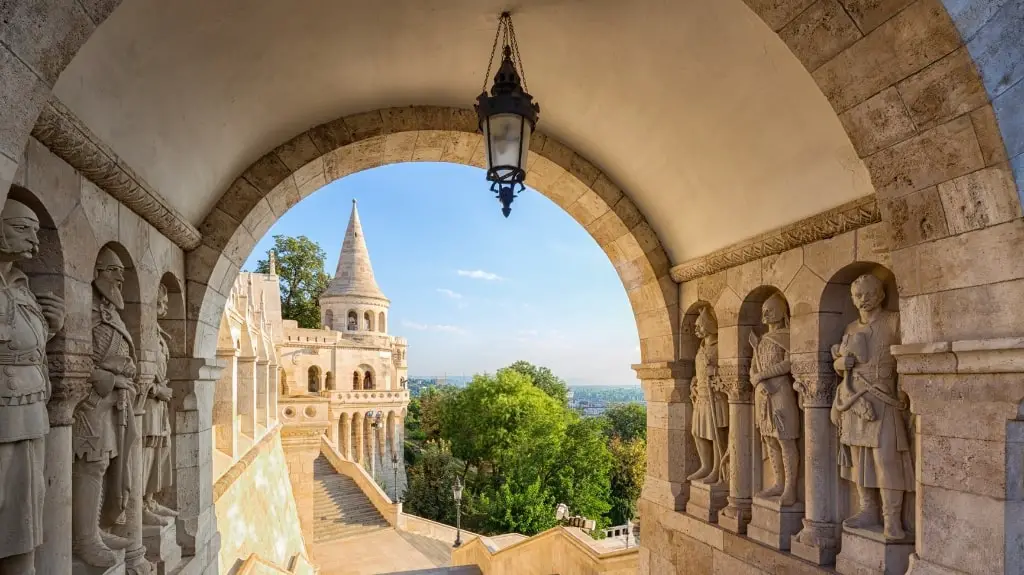
- The Fisherman’s Bastion. One of the best ways to enjoy the sheer beauty of Budapest is to climb to the Fisherman’s Bastion. The seven turreted towers of the 19th-century fortress represent the Seven Tribes of the Magyars. The views of Pest, Margaret Island, and the Danube River will take your breath away.
- House of Terror. One of the darkest museums in the world is among Budapest’s main tourist attractions. The House of Terror is a horrifying display of the history of the country. It was the site where the Soviet and Nazi regimes tortured and killed many people. The word “terror” in massive letters hangs above the entrance, preparing you for what’s inside.
Unique Locations That Make Budapest World-Famous
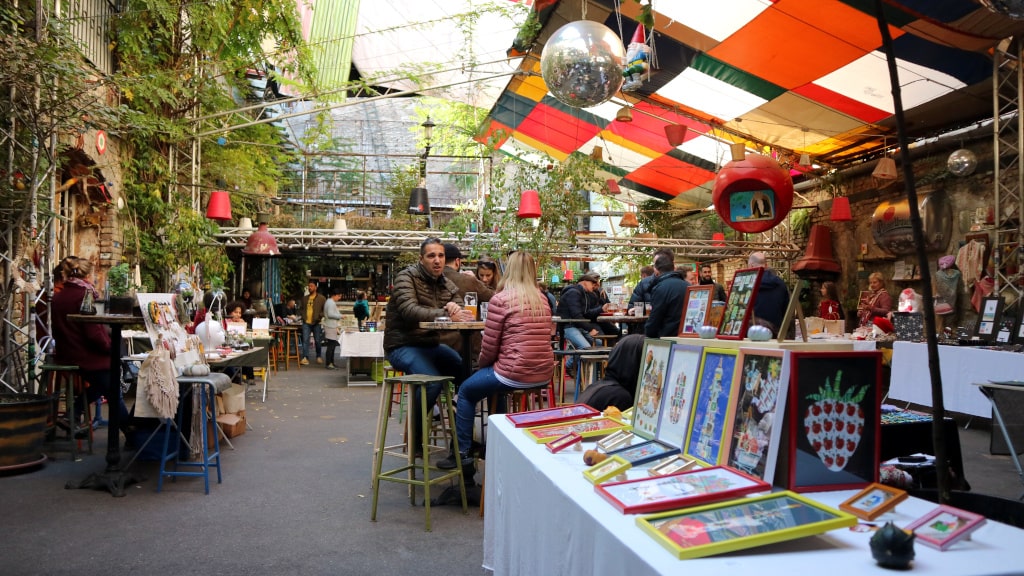
Budapest bursts with life on every corner. This section will dive into the city’s unique atmosphere and walk you around the unique locations that make Budapest world-famous.
- The Ruin Bars. The so-called “ruin bars” located in the Jewish Quarter are Budapest’s main attraction when it comes to culture and lifestyle. They’re the reason the neighborhood is one of the best areas to stay in Budapest for nightlife. Most of these upbeat spots are formerly neglected buildings furnished and equipped to function as bars. But here’s the coolest part – no two pubs are alike. Once you’re in the area, don’t miss to check out the world-famous Szimpla Kert.
- Gellért Baths. Budapest is the SPA Capital of the World, and Gellért Baths is one of the places that justify this title. The grand wellness center has an incredible open-air pool and a Finnish sauna, among dozens of other recreational facilities. The Art-Nouveau style of the 1918 structure went back to its former glory after extensive renovations took place in 2008.
- Széchenyi Thermal Baths. Talking about Budapest’s SPA traditions, we need to mention Széchenyi Baths, too. The complex is the biggest bath center with medicinal facilities in continental Europe. The pools at Széchenyi Baths are rich in magnesium, bicarbonate, calcium, and fluoride, which are essential for your well-being. At this historic SPA center, you can spoil yourself with several thermal basins, saunas, and outdoor hot water baths.
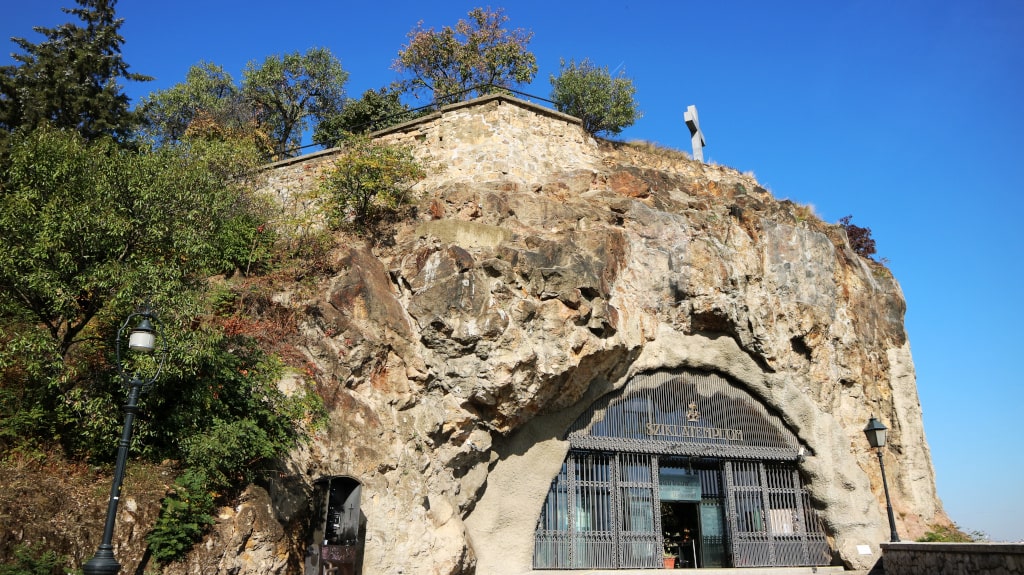
- The cave chapel. Sziklatemplom (“rock church” in Hungarian), also known as Gellért Hill Cave for its location, is one of the most peculiar spots in Budapest. Pauline monks consecrated it in the 1920s. The cave chapel served as a monastery and later as a field hospital during WWII.
- The underground caves. One of the most impressive things Budapest is known for is the labyrinth of massive underground caves beneath many of its streets and structures. In fact, it’s the only capital in the world that boasts an underground cave system. It comprises more than 200 caves. The most famous ones include the Buda Castle Labyrinth, Szemlő Mountain Cave, and Pálvölgyi Cave.
- The Shoes on the Danube Bank memorial. This is one of the most curious and touching memorials in Hungary. Located alongside the picturesque Danube Promenade, the Shoes honor the memory of those who lost their lives during WWII. 60 pairs of cast iron shoes serve as a reminder of the grim event. The victims took off their shoes before the Fascist Hungarian militia massacred them.
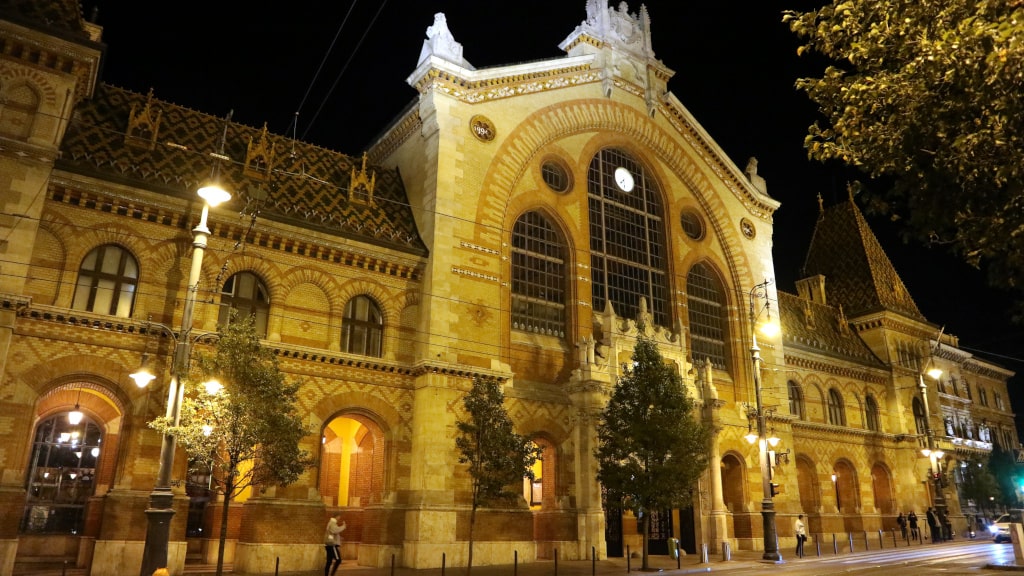
- Central Market Hall (Nagy Vásárcsarnok). Budapest’s Central Market Hall is among the city’s main attractions and its most famous marketplace. Both locals and tourists love the market for the plenty of food, spices, and souvenirs you can find there. The scale of the Market Hall is just as impressive as its neo-Gothic architecture is important for the city’s unmistakable image.
- Ecseri Flea Market. Located on Budapest’s outskirts, the Ecseri Flea Market is a real treasure trove, hiding hundreds of opportunities for a good deal. It’s one of the busiest places in all of Budapest. The flea market has it all: memorabilia, decorative pieces, souvenirs, and a whole host of eye-catching items.
- The islands on the Danube River. Seven islands in the Danube River are within Budapest’s borders: Csepel Island, Palotai-sziget, Népsziget, Háros-sziget, Molnár-sziget, Shipyard Island, and Margaret Island, the biggest one among them. Margaret Island was created by connecting three smaller islands in the 1890s. The original idea was to control the Danube River’s flow. Eventually, Margaret Island became an attraction for locals and tourists with its park alleys, sports facilities, recreational areas, and Palatinus Water Park – the biggest open-air swimming complex in the city.
- The Budapest Eye Ferris wheel. Towering at 213 ft. (65 m), the views from the top of this Ferris wheel will steal your breath away. The Budapest Eye is also an amazing sight to see from a distance, making it one of the coolest attractions of the city.
Budapest’s Popular Gastronomical Temptations

Hungarians love their national dishes, some of which are world-famous. Make sure to treat yourself to all the mouth-watering foods Budapest is famous for while exploring the city.
- Paprikás. The average Hungarian consumes more than half a kilo (approximately 1.1 lbs.) of paprika per year. So, it’s no surprise the journey to Hungarian cuisine starts with Chicken paprikás. The spicy meal is one of the foods Budapest is known for, and a must-try on your visit to the Hungarian capital.
- Beef goulash. This is by far the most popular meal in the Hungarian gastronomical world. The tasty delicacy is a meat and vegetable stew with a generous pinch of paprika. Dating back to medieval Hungary, the dish has several variations. While in Budapest, make sure to treat yourself to the traditional goulash – your taste buds will thank you for that.
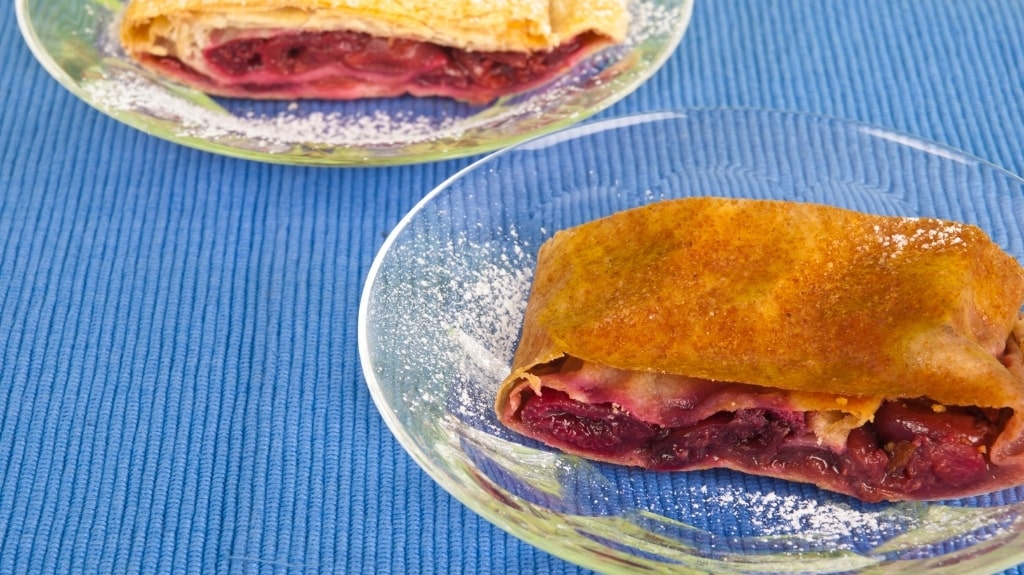
- Strudel. The filo pastry originated in the Austrian Empire and quickly became popular in the neighboring regions. In Budapest, you can stuff your face with countless Strudel variations. Hungarians eat their pastry both sweet and savory. The sweet versions are filled with cherries, plums, apricots, poppy seeds, cheese, custard crème, as well as the traditional apples. The savory variations feature cabbage.
- The legendary Budapest confectionery. Did you know that the Empress of Austria and Queen of Hungary – Sisi – loved spearmint candies? In Budapest, you can still enjoy her favorite treats. You’ll find the candies, among a large variety of other sugary delights, at the oldest confectionery in Budapest – Ruszwurm. Prepare to dive into a delicious world worthy of royalty.
- The exceptional Hungarian wines. While in Budapest, you shouldn’t miss the chance to visit a local wine bar. Hungarian wines are world-famous, and an annual Budapest wine festival celebrates their quality. The long history of wine-making in Budapest is easy to explain. The city is near the best wine regions in the country – Eger, Tokaj, and Somló.
Curious Facts Budapest Is Known For
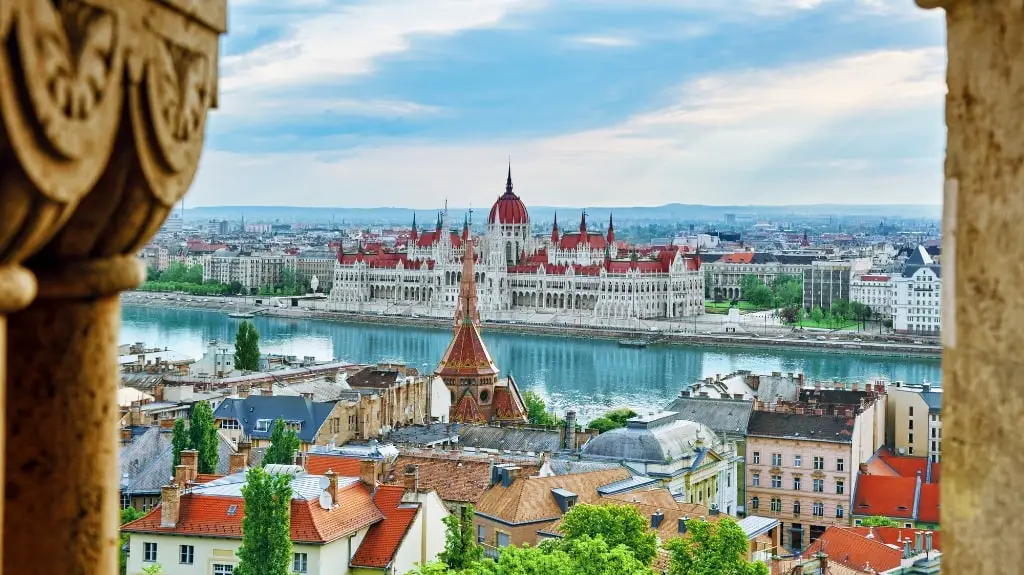
The Hungarian capital has plenty to share in terms of history, culture, and curious facts. Its legacy blends seamlessly with the modern world and makes for an experience of a lifetime. Discover the most interesting facts Budapest is popular for in the section below.
- The nicknames of Budapest. The most famous of them is The Queen of the Danube. As a historical scene with rich traditions and a host of UNESCO World Heritage sites, this title is well-deserved. Budapest offers the most diverse range of experiences you could have in any city along the majestic river. Other nicknames include Heart of Europe, Capital of Freedom, and The Capital of Spas.
- The history behind Budapest’s name. One of the facts Budapest is best known for across the globe is the story of how its name originated. It comes from the names of two of the cities that merged to create the Hungarian capital. Buda, Pest, and Óbuda officially became one city in 1873. Today, eight bridges connect the three former cities.
- The second-oldest European subway system. Except for being the second-oldest on the Old Continent, Budapest Metro is the third-oldest in the world, too. Opened in 1896, only the London and Chicago undergrounds were operating before it. One of the subway lines in Budapest, the M1, is currently on the UNESCO World Heritage List.
- The height restriction for buildings in the city. The Parliament and St. Stephen’s Basilica are both 96-m (314-ft.) tall, setting the limit for other structures erected afterward. The height of exactly 96 meters is not a random number. It’s a reference to 896 – the year of Hungary’s establishment.
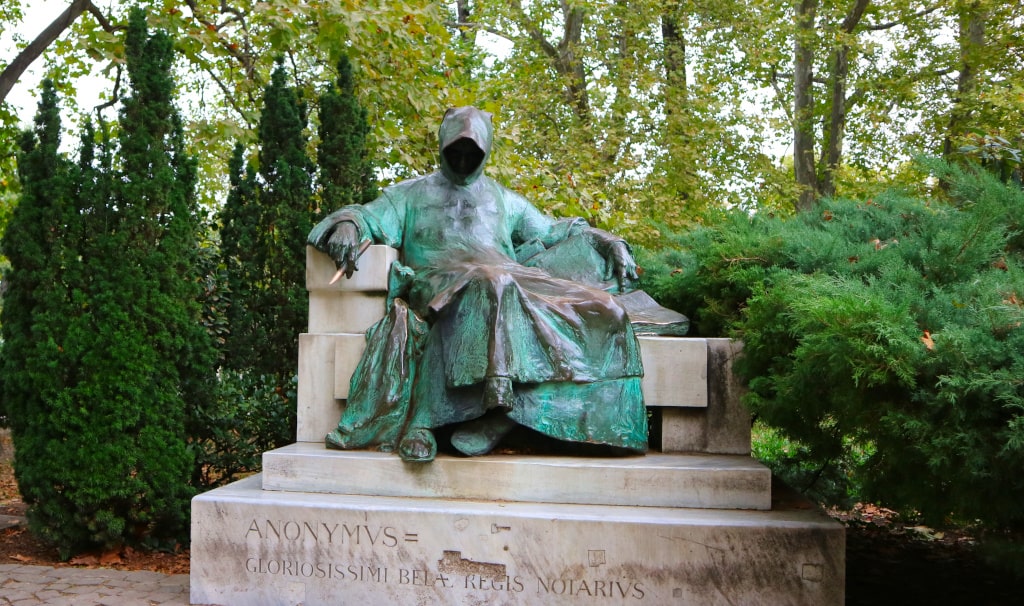
- The monument of the Anonymous Notary of King Bela. Now, this is as curious as a landmark could get. The statue depicts the 13th-century chronicler of the reigning king. The notary might be anonymous, but a curious legend surrounds his monument. The fable says that anyone who touches the chronicler’s pen would immediately get superb writing powers. We might owe our writing skills to that. 😉
- The famous people of the Hungarian capital. The marvelous Budapest is known for more than its beauty and culture. Several celebrities lived there. Among them was the inventor of the ballpoint pen – László Bíró. He was born in Budapest in 1899. Erno Rubik, the inventor of the Rubik’s Cube, was also born in the city, in 1944. The master of deception and illusion Harry Houdini (born Erik Weisz) is also one of Budapest’s most famous people.
- The bullet holes in buildings’ façades. Roaming the streets of Budapest, you’ll make an unexpected discovery: bullet holes in many walls. The 1956 revolution aimed to eradicate the communist regime, resulting in extensive and violent clashes. The bullet holes still visible are a grim reminder of this episode of Hungarian history.
- Islam’s north-most sacred place. The Turkish dervish Gül Baba lived in the Hungarian capital in the 16th century. He stayed in Hungary after the Turkish invasion ended. After his death, he received a holy status. His tomb is located in the Buda part of the city and is an Islamic sacred location.
Which of the Things Budapest Is Famous For Surprised You the Most?
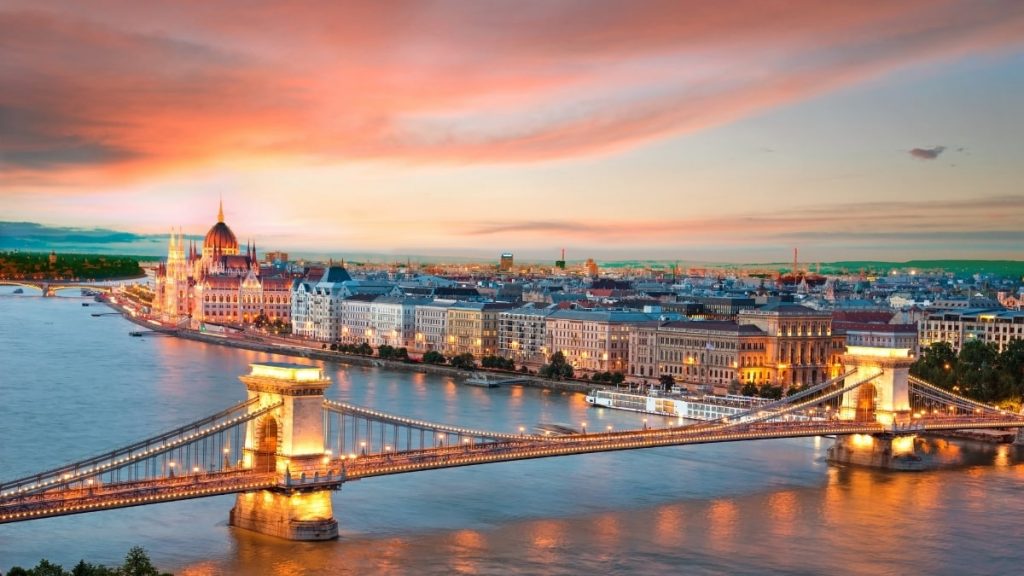
This concludes our list with 33 cool things Budapest is known for.
The Hungarian capital will seduce you with its stunning landmarks, peculiar underground caves, mouthwatering delicacies, and heart-pumping vistas of the Danube River.
To make the most of your trip, don’t forget to check our best Budapest travel tips.
Start Planning Your Trip to Budapest with Our BEST Recommendations:
⭐ Top Tours in Budapest ⭐
📍 Budapest Grand Tour – the highlights of Buda and Pest, including the Parliament.
📍 Danube Cruise with Prosecco – unlimited prosecco and Budapest at night.
⭐ Best Accommodations in Budapest ⭐
🏨 Monastery Boutique Hotel Budapest – our top pick near Buda’s main attractions.
🏨 Bohem Art Hotel – this funky, hip hotel has the vibe of an art gallery.
⭐ Easiest Transportation Options in Budapest ⭐
🚍 Budapest Card – enjoy discounts, free travel, and entrances to museums.
🚍 Discover Cars – compare and find the best rates for car rentals.
Now, we’re curious:
What comes to your mind when you think about Budapest?
Share with us in the comments below.





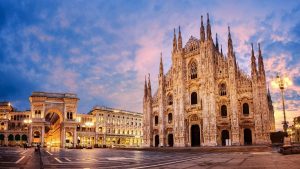
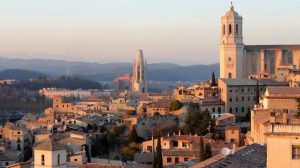
We continuously look for out of the way restaurants that the locals go to, and watering holes as well, we find that the energy and atmosphere, as well as the food and drink is what makes our trips memorable, we have found ourselves following men in working cloths ( at the lunch hour time) to the strangest and most fascinating establishments.
Hey Blair,
that’s an awesome tip!
We find the culinary scene an important part of the travel experience as well 🙂
In Budapest, the ruin bars are a must. As for food, Naddya found Klauzál Café & Restaurant by swerving into narrow streets and looking for a local crowd. She even returned the next day for a second visit. Highly recommend it!
Cheers and happy travels!